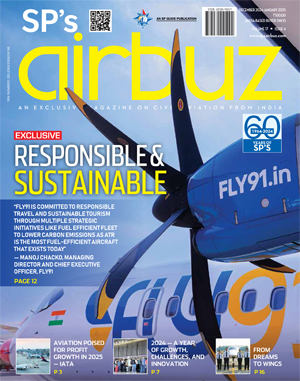Flying Cars Ready For Drive
Flying cars do promise to cut the travel time, free us from the traffic woes, and certainly transform the way urban landscape looks

Human’s obsession with flying cars is not entirely new, the concept has been around for decades. In the past, people have experimented by adding aircraft wings to a car in an attempt to make it fly. Science fiction has made us awe at cars flying through the buildings in our favourite super hero comic or movie. Yet flying cars have not been our reality even though they hold the promise to reduce travel time, free us from traffic woes, and transform the way urban landscape looks. Well, the future where your car can lift off from the road and rise above the traffic literally is not too far. Here are our flying cars picks that are already hitting the road and touching the sky, ready to transform far fictional future into a right-now reality.
PAL-V: ‘A CAR THAT FLIES AND A PLANE THAT DRIVES’
The Dutch company, PAL-V’s (Personal Air Land Vehicle) acclaimed first commercial flying car, the PAL-V Liberty is getting closer to deliveries. It is on its way to hand over the keys to its first customers in 2022. After being the first flying car to get road permission for Europe, PAL-V is now also the first to complete the full certification basis with EASA (European Union Aviation Safety Agency). The Liberty had already been approved for road usage in 2020.
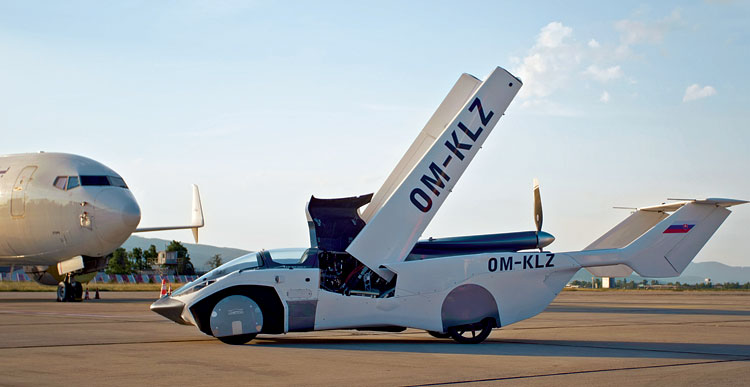
PAL-V LIBERTY
| Capacity | 2 persons |
| Mass Empty | 664 kg |
| Maximum baggage load | 20 kg |
| Maximum Take-Off Weight (MTOW) | 910 kg |
| Fuel type | Euro 95, Euro 98, E10* |
| Fuel capacity | 100 l |
| Dimensions Drive-mode | 4m L x 2m W x 1.7m H |
| Dimensions Flight-mode (Rotor diameter is 10.75m) | 6.1m L x 2m W x 3.2m H |
*Unleaded automotive fuel, with max. 10% ethanol (E10), EN 228 specification, min RON 95 (min AKI 91)
DRIVE MODE
| Max Speed | 160 km/h |
| Top speed acceleration (0-100 km/h) | <9 seconds |
| Engine power | 100 hp |
| Fuel economy | 7.6 l/100 km |
| Range | 1315 km |
FLIGHT MODE
| Economic cruise speed | 140 km/h |
| High cruise speed (90% range) | 160 km/h |
| Maximum speed | 180 km/h |
| Min speed for level flight | 50 km/h |
| Engine power | 200 hp |
| Maximum operating altitude | 3500m |
Source: PAL-V
The Pioneer Edition of the Liberty, explains the company, is for those that want to be part of the group of 90 becoming the first car flyers in their country. The 665 kg PAL-V Liberty comes with dual engine, a maximum airspeed of around 180 km/h and a maximum range of 500 km and within 5 minutes the PAL-V converts easily from a car into a gyroplane. Using existing infrastructure to take off and land, the PAL-V Liberty complies with the existing rules and regulations for both road and air licensing.
Its three wheel design offers advantages in the mechanical design as well as for safety during landing as “one front wheel is easier and safer especially with crosswind landings”. The Human Error Proactive Counteraction methodology (HEPC) of the company uses a flight simulator to model potential pilot errors and mistakes, and then try to work out how they can be avoided in the design of the PAL-V Liberty. As a gyroplane, the PAL-V Liberty cannot stall because the gyroplane rotor (powered by the airflow) is always in auto-rotation during flight. Even an engine failure will not affect the autorotation as, due to the speed of the wind and the force of gravity, the rotor will always rotate and generate lift. It is comparable to an opened parachute so you can land and be in full control even without the engine, ensures the company.
HIGHLIGHTS
- The Liberty is full carbon, which is why it is so lightweight.
- The PAL-V Liberty’s lightweight design enables a range of 1,200 km driving or 400 km to 500 km flying.
- The Pal-V Liberty’s gyroplane rotor is always in auto-rotation.
- Equipped with two engines.
- Relatively quiet, and far less sonically intrusive than a helicopter.
- No need for a hangar or a fuel station at the strip as well.
- It can fly over water.
AIRCAR: ‘SCIENCE FICTION IS NOW A REALITY’
Slovakian company, Klein Vision’s AirCar, a dual-mode car-aircraft vehicle successfully finished its first inter-city flight recently. Fulfilling a key development milestone in a 35-minute flight from the international airport in Nitra to the international airport in Bratislava last month, the AirCar completed its 142nd successful landing. After landing, “the aircraft transformed into a sports car in under three minutes" informed the company.
Predominantly built from an advanced composite material, the 1,100 kg two-seat model can carry additional load of 200 kg per flight and is powered by a BMW 1.6l engine. With an effective power output of 140HP, the car plane’s estimated travel range is 1,000 km for flight consumption of 18 l/h. AirCar goes from ground to sky with a takeoff of 300m reaching speeds up to 200 km/h.
Following the completion of all required flight tests in compliance with EASA regulations, the company aims to deliver a model with a certified ADEPT, 300HP engine within the next 6 next months. AirCar’s lift body concept includes future development for the spacious interior and for the variety of models: three and four seaters, twin-engine, and amphibious version.
HIGHLIGHTS
- AirCar’s aerodynamic fuselage contributes to better lift characteristics during the flight.
- Among advanced technologies are the retractable wings, folding tail surfaces, parachute deployment system.
- The folding tail surfaces allow better longitudinal stability and take-off characteristics.
- In the car mode, retracted tail results in a more compact size.
- On the road, the object generates down force using spoiler and elevator pitch whereas in the aircraft mode the entire surface generates lift.
- A Flight Demonstrator Testbed (FDT), a model in the scale 1:1, has been built and used in flight mode to test various aerodynamic and flight control characteristics.
AEROMOBIL: ‘EQUALLY AT HOME ON THE ROAD OR IN THE SKY’
Arriving early 2023, the Aeromobil promises to be the evolution of the supercar. “Inspired by the mythical winged horse Pegasus, the AeroMobil is the high-end vehicle species - from driving to flying,” stated the Aeromobil Company.
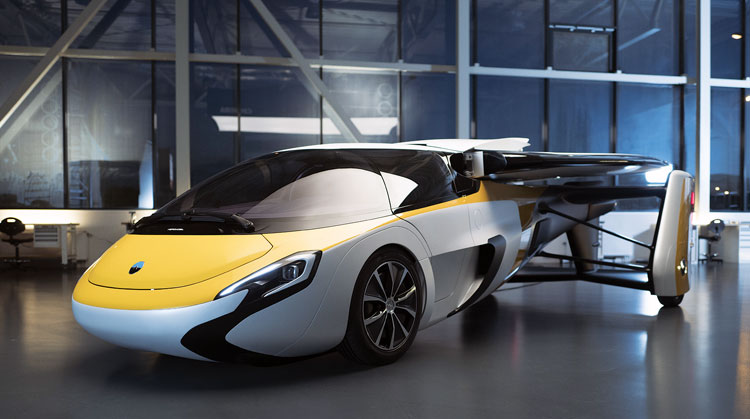
AEROMOBIL
| OPERATING RANGE |
Driving Range (estimated using WLTP) ~520 km / ~320 miles Flying Range ~520* - 740** km / ~320* - 460** miles *dual occupancy |
| SIZE |
Automotive Dimensions Aerospace Dimensions |
| POWER |
Hybrid propulsion system with a turbocharged internal combustion engine Power – 224 kW (300 bhp) Adaptive transmission delivering road-going functionality and direct drive during flight Constant speed propeller |
| PERFORMANCE |
Driving – Top speed 160 km/h, 0-100 km/h 10 sec / 100 mph, 0-62 mph10 sec Flying*: * verified by actual flight tests |
Source: https://www.aeromobil.com
With the ability to transform from car to aircraft in under three minutes, the latest version of Aeromobil has undergone over 3,50,000 hours of engineering and design, and over 10,000 hours of simulated and live flight tests over the course of its development. It is currently in an advanced stage of live test flights that began in the September of 2020.
The lineage of the vehicle comprises automakers BMW, Aston Martin, McLaren, Mercedes Benz F-1 and Ferrari F-1, as well as aerospace leaders Lockheed Martin, Rolls-Royce, Airbus, and Diamond Aircraft, among others.
KEY FEATURES
- Full transformation between drive and flight modes in less than 3 minutes
- Adaptive flight control surfaces and vehicle suspension for optimal take-off and landing
- Advanced controls and avionics in both fly and drive mode
- Aerospace certification basis: CS 23
- Ballistic Recovery Parachute System for entire vehicle
- Integral carbon fiber structure & occupant cell
THE TRANSITION: ‘ONE VEHICLE, TWO MODES OF TRAVEL’
Terrafugia, Inc., a US-based Chinese owned corporation is working on revolutionising mobility with its two-seater Transition that converts from drive mode to flight mode in “under a minute with just the push of a button”. This year the company announced FAA (Federal Aviation Administration) special lightsport airworthiness certificate for the Transition roadable aircraft.
The vehicle that received the certificate is legal for flight and represents the initial version of the Transition roadable aircraft. The company plans to produce and sell additional initial (flightonly) versions to interested parties and eventually evolve the driving portion of the design, with the goal of being legal both in the sky and on local roads in 2022.
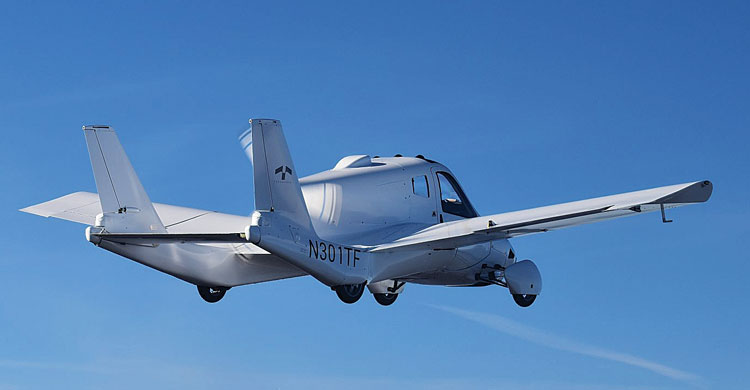
TERRAFUGIA’S TRANSITION
| SAFETY FEATURES |
Airframe parachute Airbags Seatbelts with automatic retractors Structurally rigid cabin engineered to meet auto safety standards 3 cameras in drive mode |
| REQUIREMENTS |
Driver’s License Sport Pilot Certificate |
| DIMENSIONS |
Drive mode: 7.5 ft x 6.9 ft x 19.5 ft Flight mode: 7.5 ft x 27.2 ft x 19.5 ft |
| SPEED AND FUEL |
Max Speed | 100 mph | 161 km/hr Fuel Burn | 5 gallons/hr | 19 liters/hr Fuel Capacity | 20 gallons + | 76 liters + Fuel Type | 91 Octane Automotive Fuel |
| RANGE AND PAYLOAD |
Max Range | 400 mi | 644 km Useful Load | 500 lbs | 227 kg TOFL | 1400 ft | 427 m Service Ceiling | 9000 ft + | 2743 m + |
Source: Terrafugia
Powered by a 100-hp Rotax 912iS sportfuel-injected engine with a 2,000 hr TBO, the vehicle has a flight speed of 100 mph and runs on either premium gasoline or 100LL airplane fuel.
KEY FEATURES
- Dynon Skyview
- avionics package
- BRS® airframe parachute
- four-wheel hydraulic disc brakes
- hybrid electric motors for drive mode
- rigid carbon
- fiber safety cage
- folding wings to allow storage in a single-car garage
With the aim to revolutionise daily travel, the company is also designing the TF-2 to make travel by air and ground part of nearly everyone’s daily commute. It is a three part system that combines a passenger cabin that transfers between a road vehicle and an air vehicle. The TF-2 will take-off like a helicopter, fly like an airplane, and drive on the roads using the latest technology in electric propulsion, construction materials and manufacturing processes to ensure safety and reliability.
POP.UP NEXT: ‘A SEAMLESS TRAVEL EXPERIENCE’
In 2017, Italdesign and Airbus, world-premiered Pop.Up, the first modular, fully electric, zero emission concept vehicle system for multi-modal transportation that makes full use of both ground and airspace. The two-seater, Pop.Up System consisted of:
- an Artificial Intelligence platform that, based on its user knowledge, managed the travel complexity offering alternative usage scenarios.
- a vehicle shaped as a passenger capsule designed to be coupled with two different and independent electric propelled modules (the ground module and the air module).
- an interface module that dialogues with users in a fully virtual environment.
- the modular concept includes a capsule that connects to either a ground or air module, and can be integrated into other means of transportation.
- passengers would interact with the multimodal transportation system through a simple app.
Pop.Up’s was unveiled with a simple modus operandi: passengers plan their journey and book their trip via an easy-to-use app. The system automatically suggests the best transport solution - according to user knowledge, timing, traffic congestion, costs, ride-sharing demands - joining either the air or ground module or other means of transportation to the passenger capsule, and following passengers’ preferences and needs.
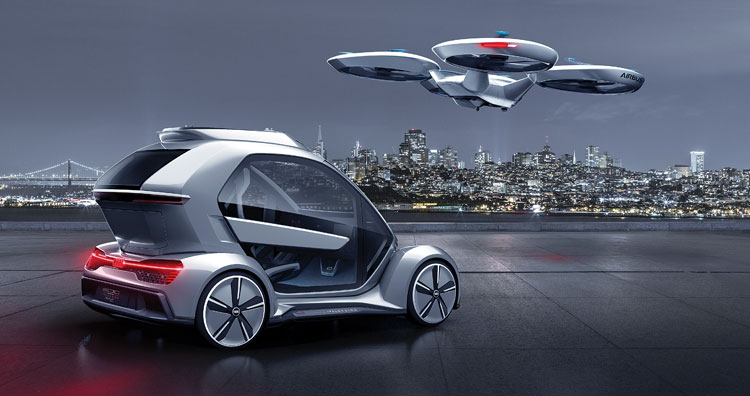
The 2.6 metres long, 1.4 metres high, and 1.5 metres wide carbon-fibre capsule disconnects from the ground module and is carried by a 5 by 4.4 metre air module propelled by eight counterrotating rotors. In this configuration, Pop.Up becomes an urban self-piloted air vehicle, taking advantage of the third dimension to get from A to B efficiently. Once passengers reach their destination, the air and ground modules with the capsule autonomously return to dedicated recharge stations to wait for their next customers.
Built upon the success of this, the team is working on the future medium/long-term development of the ‘Pop.Up Next’ project. They also have Audi on board for this project. Audi’s four rings “bestow an element of prestige on future mobility, witnessed by Pop.Up Next, whilst maintaining its own democratic approach through shared usage extended to all those living in the megacities involved”. Pop.Up Next car combines the four major innovations transforming the future of driving: electric power, autonomous driving, service-oriented, and flying.
With developments like the ones mentioned above and many others combining the two most used platforms for commuting, land and air, the mobility panorama is set to transform into a scene straight from a fictional content. Balancing the increasing urbanisation concerns of traffic congestion, demand for convenience, advancement in technology, and need for efficiency, the flying cars could be the most promising advent in the automobile history.





